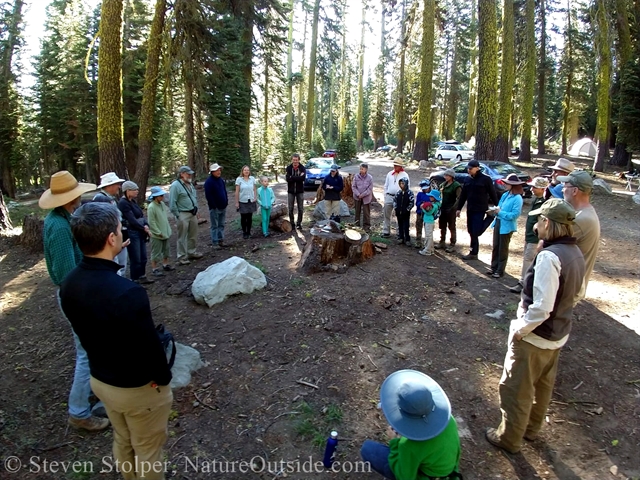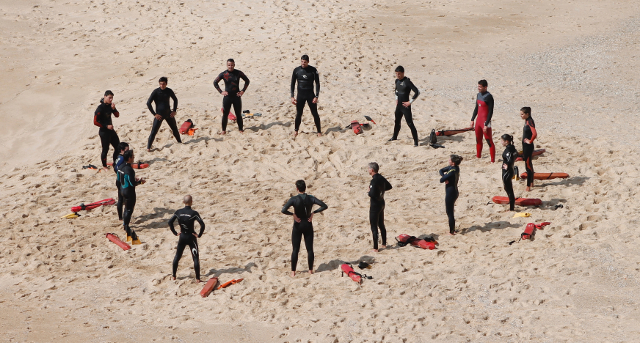
Photo by E. Montgomery-Brown on Facebook
Have you heard of a closing circle?
If you teach wilderness skills, guide group hikes, or lead outdoor programs, then you probably have. You can use the closing circle to amplify the impact of your outdoor programs. So it should be part of the group experiences you lead.
The Opening Circle
Everything begins and ends. And we pay a lot of attention to beginnings. Maybe because they’re easy to spot. We introduce ourselves. We talk about the day’s hike, class, or activity. We check that each hiker has the proper equipment. It’s like the opening ceremony of the Olympics – preparing us for the games that follow.
If you teach wilderness skills, you’ve likely led many opening circles. Besides helping to form a group, opening circles prepare each member for the experience that follows. It separates participants from their helter-skelter lives and primes them for time in the wilderness. It’s a boundary. Daily cares and worries on one side and the freedom of nature on the other.
The Closing Circle

Professional outdoor activities and training routinely employ closing circles. Photo by Margarida CSilva on Unsplash.
The closing circle is a bookend for your outdoor activity. Some would argue it’s even more important than the opening circle. Yet many of us forget it. We’re in a rush to get back to the “real world” after our program ends.
But if you skip the closing circle, you miss a chance for real learning and transformation. A closing circle guides participants to reflect on their wilderness experience and consider what they’ve learned. And it prepares them to carry it back to their daily lives
What is a Closing Circle?
A closing circle is a gathering where each person shares his or her thoughts on the day’s activities. It doesn’t need to be elaborate. It can last just minutes. A closing circle can be anything you want it to be.
Here are some ideas for what you can ask participants to do in a closing circle. Usually I pick one from the list below:
- Share what they are thankful for
- What did they enjoy most about the day?
- What, if anything, did they not like?
- What was the most surprising thing they discovered?
- What questions do they have? (that they are taking with them)
It’s important to pick only one thing for participants to share. You don’t want to be there the rest of the day!
When and Where to have a Closing Circle
Pick a distraction-free place to hold your closing circle. I run programs at a local state park. I always hold my closing circles in a natural setting, before we reach any paved surface or parking lot. It’s important that the setting is natural, distraction free, and quiet. It needs to be optimal for communication.
Do it for yourself
Get into the habit of holding a closing circle just for yourself. On solo hikes, I pause at the end to consider what I saw. Sometimes I gain new insight from just taking a few minutes to organize my thoughts.
Do you hold closing circles? Let me know about them in the comments below.
Related Articles on NatureOutside
How to Choose a Wilderness Survival Class
10 Traditional Skills You Should Learn
To See More Wildlife, Learn Bird Language
For fun facts and useful tips, join the free Bushcraft Newsletter.



Leave a Comment